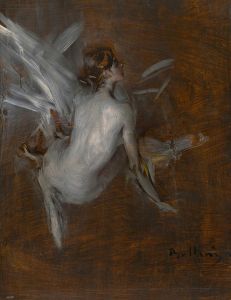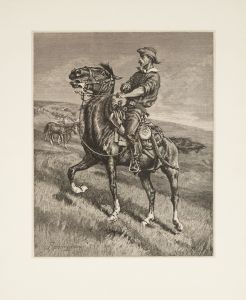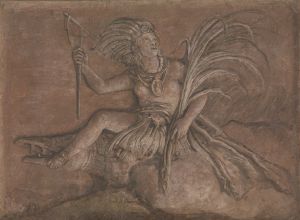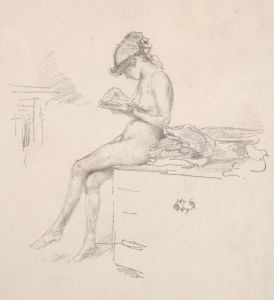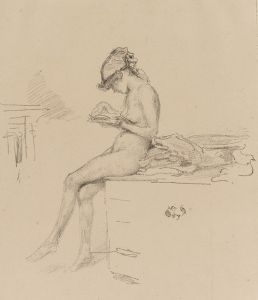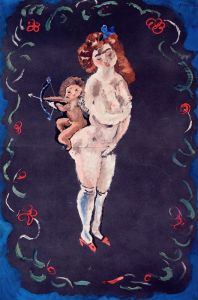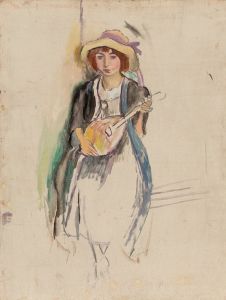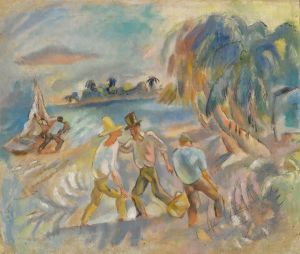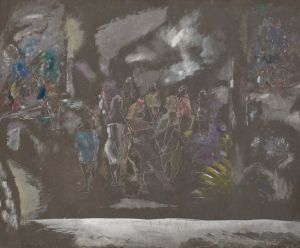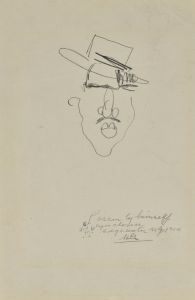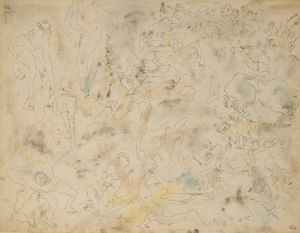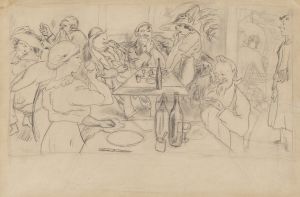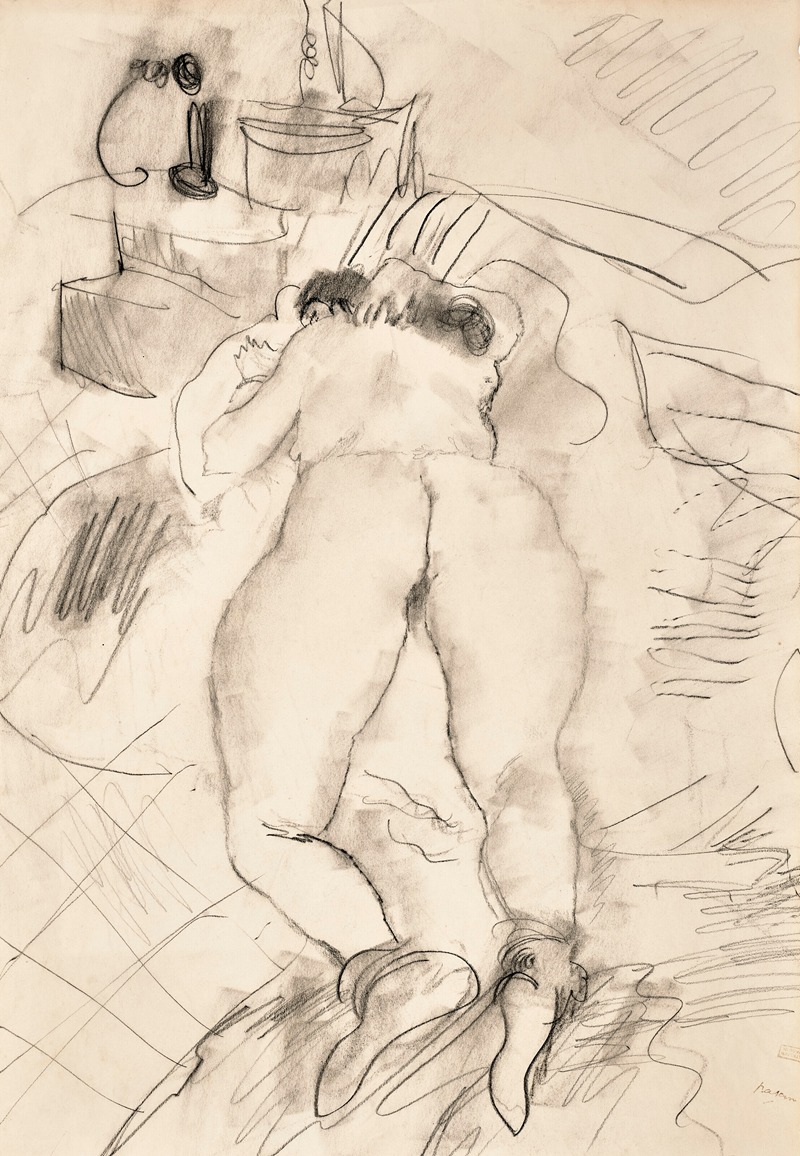
Modèle en Amérique
A hand-painted replica of Jules Pascin’s masterpiece Modèle en Amérique, meticulously crafted by professional artists to capture the true essence of the original. Each piece is created with museum-quality canvas and rare mineral pigments, carefully painted by experienced artists with delicate brushstrokes and rich, layered colors to perfectly recreate the texture of the original artwork. Unlike machine-printed reproductions, this hand-painted version brings the painting to life, infused with the artist’s emotions and skill in every stroke. Whether for personal collection or home decoration, it instantly elevates the artistic atmosphere of any space.
Jules Pascin, born Julius Mordecai Pincas in 1885, was a Bulgarian-born artist known for his contributions to the art world in the early 20th century. He became a prominent figure in the Montparnasse district of Paris, where he was associated with the avant-garde movement. Pascin's work is characterized by its loose, expressive style and often features themes of bohemian life, portraiture, and the human form.
"Modèle en Amérique" is one of Pascin's notable works, created during his time in the United States. Pascin traveled to America in 1914, shortly before the outbreak of World War I, and spent several years there. During his stay, he was exposed to new influences and environments, which had a significant impact on his artistic output. His American period is marked by a series of works that reflect his experiences and observations of the New World.
The painting "Modèle en Amérique" exemplifies Pascin's ability to capture the essence of his subjects with a sense of immediacy and intimacy. The work features a model, presumably an American, depicted in a relaxed pose. Pascin's use of color and line is both fluid and dynamic, conveying a sense of movement and life. The painting reflects Pascin's interest in the human form and his ability to portray it with sensitivity and depth.
Pascin's time in America was a period of both personal and professional growth. He interacted with other artists and intellectuals, expanding his network and gaining new perspectives. This period also allowed him to explore different themes and techniques, which enriched his artistic repertoire. "Modèle en Amérique" is a testament to this phase of exploration and adaptation in Pascin's career.
Despite his success and recognition, Pascin's life was marked by personal struggles. He battled with depression and alcoholism, which ultimately led to his untimely death in 1930. However, his legacy as an influential artist endures, and his works continue to be celebrated for their emotional depth and artistic innovation.
"Modèle en Amérique" is an important piece within Pascin's body of work, representing a unique intersection of his European roots and American experiences. It showcases his ability to blend different cultural influences and artistic styles, resulting in a work that is both distinct and universal. Pascin's contribution to the art world is significant, and his works remain a subject of study and admiration for art enthusiasts and scholars alike.
In summary, "Modèle en Amérique" is a reflection of Jules Pascin's artistic journey during his American sojourn. The painting captures the essence of his style and thematic interests, highlighting his skill in portraying the human form with nuance and emotion. Pascin's work continues to be appreciated for its artistic merit and its ability to convey the complexities of the human experience.





